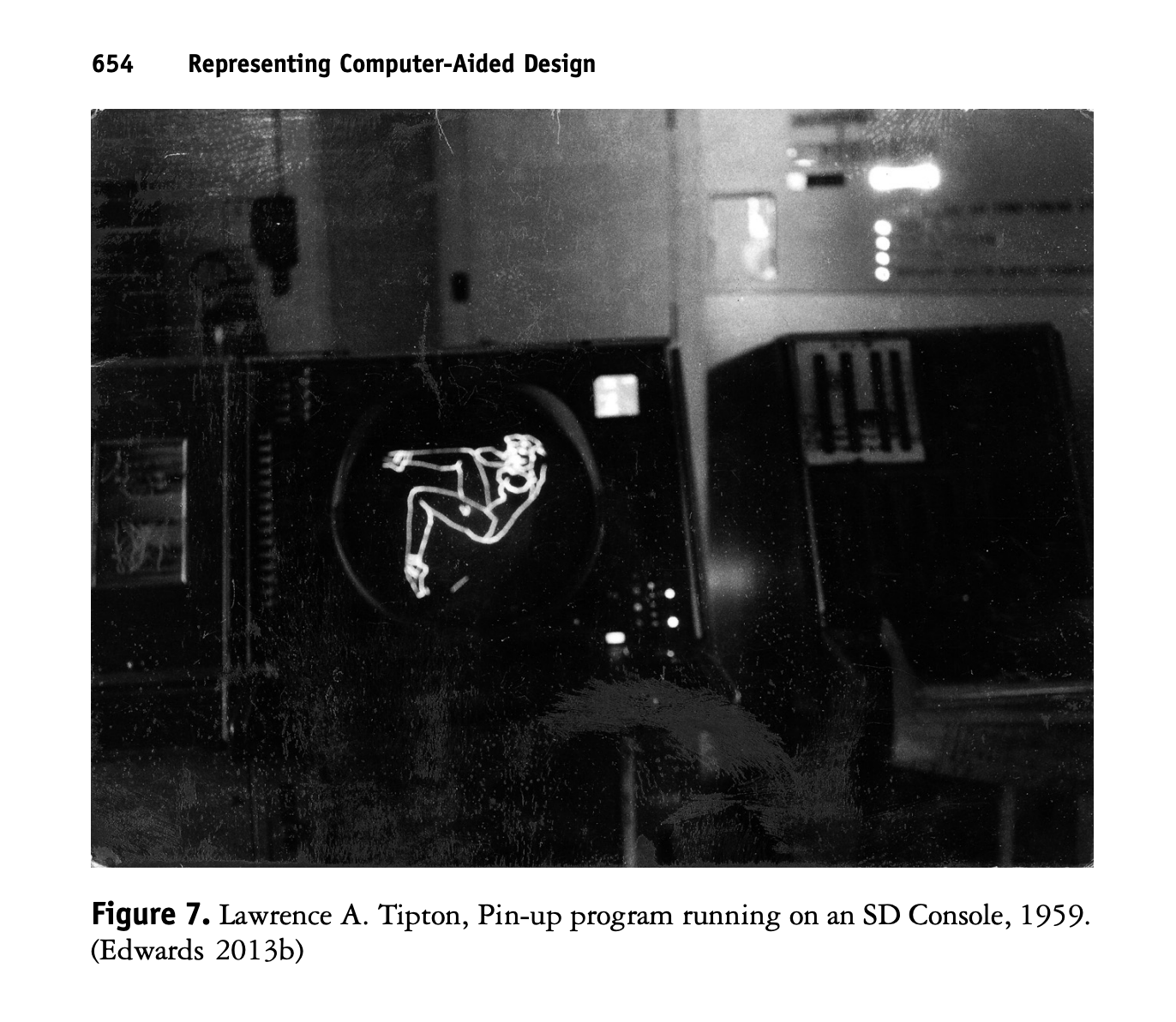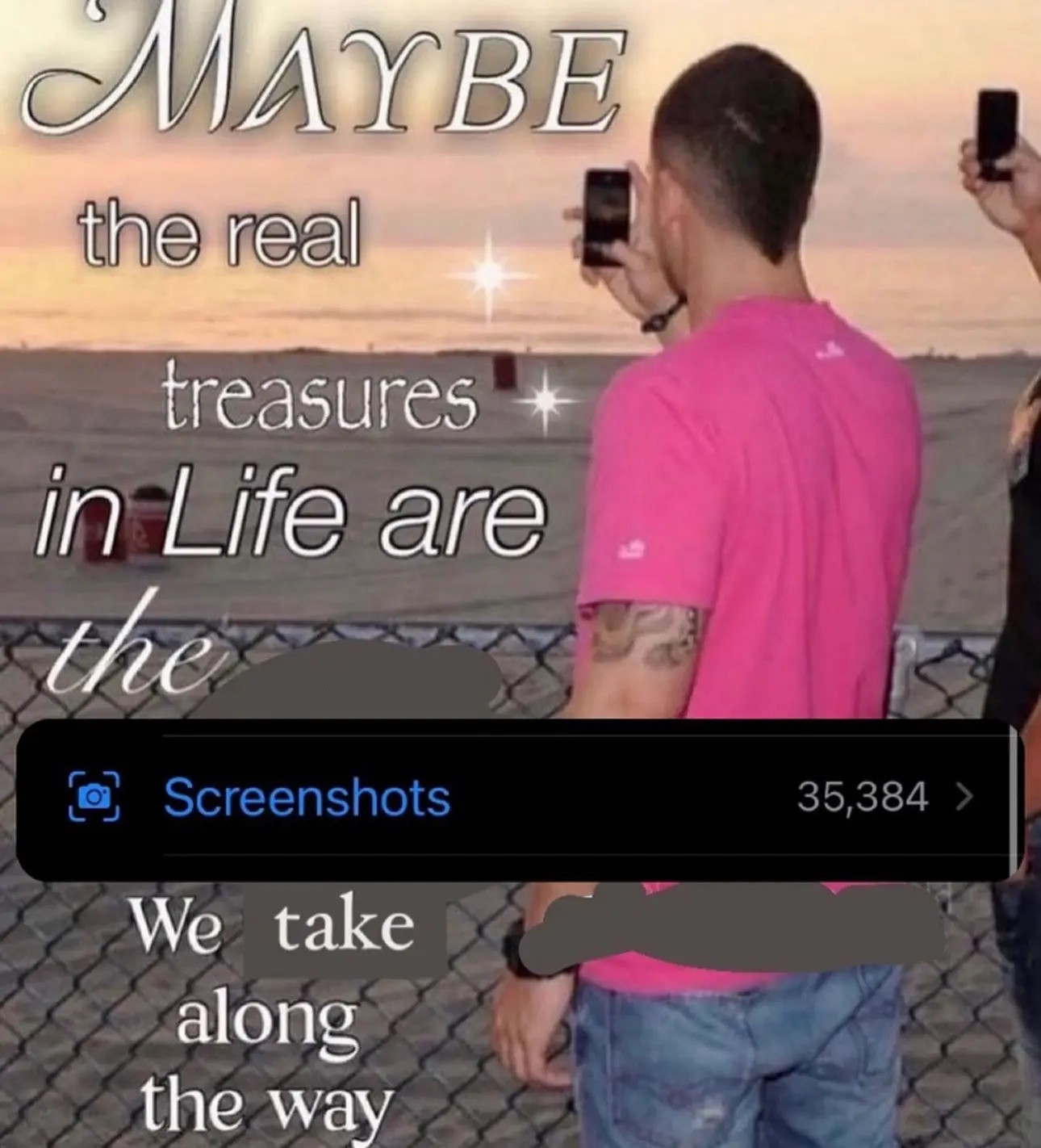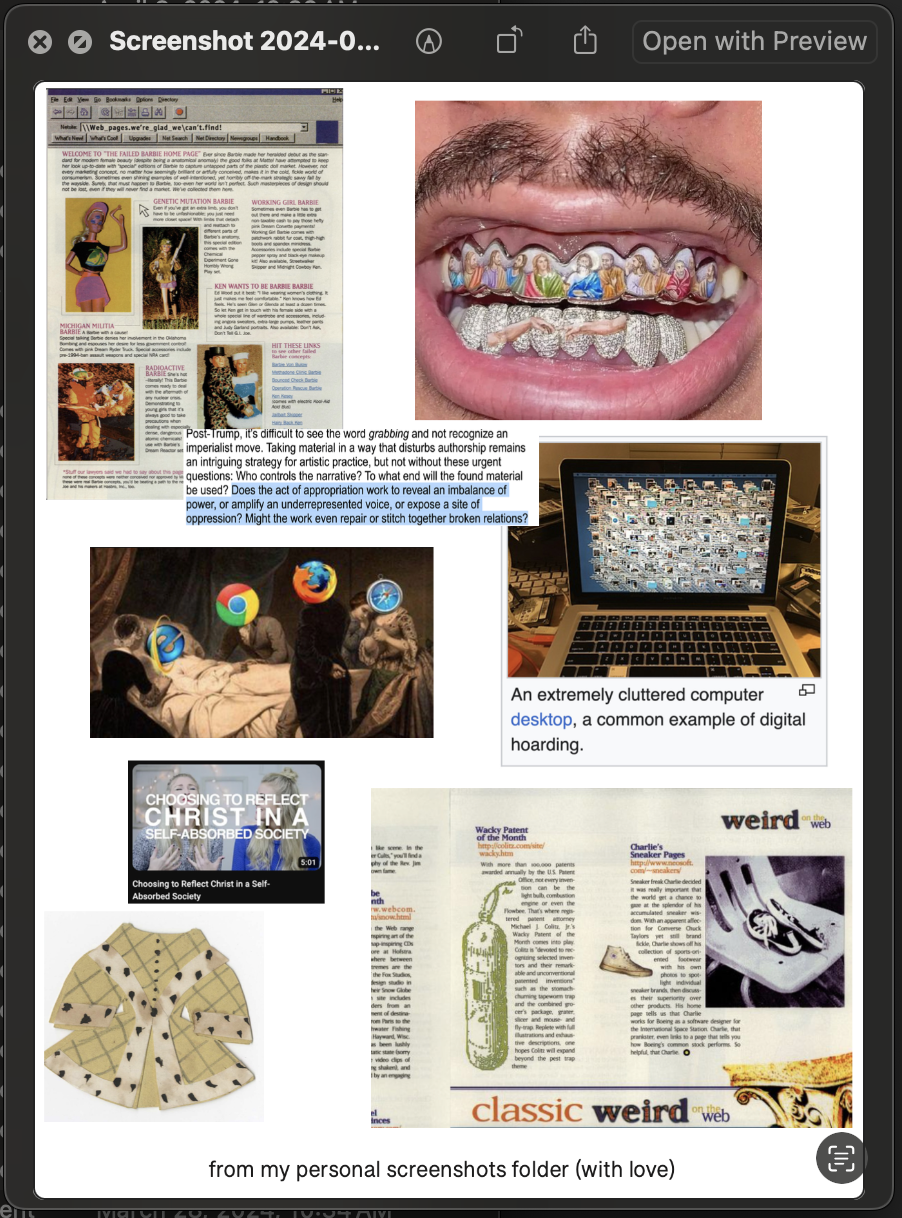Screenshot Protocol
Isabella Haid
Erasurist Practices in Meme Archivism

Screenshot from Matthew Allen's Representing Computer-Aided Design: Screenshots and the Interactive Computer circa 1960. "It has been claimed that the very first screenshot was a photograph of a cathode ray tube displaying a pin-up girl, taken in 1959" on one of the SAGE systems used by the US Air Force. Allen argues that screenshots in the context of early computer systems were "more than mere photographs: they employ a distinct set of conventions. These conventions center on the fact that screenshots are, indeed, photographs of interactive screens. That is, the fact that they are photographs of screens is part of their representational content. So figure 7 is not simply an image of a pin-up girl, but an image of a pin-up girl displayed on an interactive computer screen."
The Screenshot Protocol is a speculative framework for reshaping our relationship to memetic media and digital archives. The Screenshot Protocol reconfigures the embodied experience of "screenshotting" from muscle memory into ritual: What if screenshotting was a technique? And, when situated within a server practice, how can it generate new archival experiments and approaches to ephemeral media? As a protocol which engages the feedback loop between archivist and archive, materiality and ephemerality, urgency and care, the Screenshot Protocol imagines the archive, the screenshots, and the server in which they inhabit as a living media ecology. The screenshot itself, an erasurist craft which strips its contents of metadata and context, also creates a new environment for the media artifact and archivist to perform: through and within these gaps. The Screenshot Protocol invites speculation, or reading/writing the gaps, into the meme archive from its inception. Wanting to problematize the assumed or enforced stability of meaning that is often associated with both "the archive" and "the protocol", I wondered how an archive of screenshots, with all their missing parts and affective weight, might accomplish this. And so, we could say that the archive, server, and screenshots, along with the people & labor which actively maintains them, comprise something like solidarity infrastructure (!)
I created a (sort of) zine of compiled notes, quotes, and ideas related to the Screenshot Protocol!
>>>>>>>>> Download it here <<<<<<<<<< Feel free to print & share
Meme Archive?
When I was still in school, I was the student head of the Bard Meme Lab, an interdiscplinary cohort of current Bard students, alumni, and faculty who all spend a little too much time online. Since graduating from school last May, I've taken on the role of alumni coordinator for group. For the past few years I've been working with the lab, we've been engaged in lengthy and neverending discussions on what archival practices and processes should look like for memetic media. A couple of years ago, we began "Meme Mining" during our weekly meetings, where we'd pick a current event (usually politically urgent) and collect as many memes as we could find on/about/around it. In some cases, we also made zines using these mined memes, printed en mass, and distributed them across campus. We've also collaborated with other student groups, such as Students for Justice in Palestine, to enact these emergency archives and produce print media to distribute at rallies and other events. These "emergency archives" currently live in google drive folders (lame) but I want to give them a proper home, situated both within the lab's community and not reliant on the network gods that be (how will memes be preserved after the Internet?). I know this local storage model might not fully align with the grand vision the Meme Lab has been plotting all these years, but I think it's a great start and a fun project.
Protocol?
I think I started this project worrying too much about the server & archive, and less about what reading & writing to it would look like. I was inspired by our readings on protocols and thought about how to use one to address the confusing feelings and obvious pitfalls of a "meme archive". Screenshots are the obvious thing not to do. Any professional archivist would probably roll their eyes at the thought. Why make something as useless as a meme even more useless? That screenshotting is the bad move, the foolish move, the wrong way to go about things if you want to be taken seriously is what motivated me to design the Screenshot Protocol. As mentioned before, the Bard Meme Lab had gotten so caught up in theorizing and speculating that it was hard to actually begin any archival work. This is why the screenshot protocol is a great place to start. It's an experiment that isn't concerned with totality because it has nothing left to lose. Like the media artifact which migrates across platforms in the process of "getting memed", the screenshot rips meaning, tears up metadata, and circulates across every conceivable context. The screenshot might be the most detestable method for archivism, but it is also the most pervasive, embodied, and technically simple method. Why is screenshotting so instinctual? How are screenshots felt? I wanted to think about a protocol that takes into account the emotional dimension of the practice: why does it take half a second to decide to right+click+save? How might the screenshot capture something more than the pixels, or the moment, or the problem? I'm also using the Screenshot Protocol to address the otherwise solipsistic or isolating practice of screenshot hoarding by repurposing the screenshot to promote a greater sense of community, especially for those of us seeking to resolve the dilemma of meme archivist. It's more of a speculative framework than a solution, but I think it's generative for designing new experiments in meme archivism.

Texts, artworks, philosophies, and archives which inspired this project:
- Screenshot Garden by Everest Pipkin.
- Printed Web series by Paul Soulellis.
- Decade of the Internet by Jacob Ciocci.
- PrtScn: The Lazy Art of the Screenshot edited by Dunja Nešović.
- 9 Eyes of Google Street View by Jon Rafman.
- Print Screen curated by Roopa Vasudevan & Walker Tufts.
- Screens Shot by Jacob Gaboury.
- Screenshots of Despair by Josh Kimball.
- The Last Message Received by Emily Trunko.
- Screenshot by Toru Izumida.
- Desktop Is by Alexei Shulgin.
- The Ruling Class Has an Idea by F. C. Zuke.
- File_Món by César Escudero Andaluz.
- @UKRaveComments on Twitter.
- @EverythingOOC (out of context) on Twitter.
Let's connect :)
- My website
- are.na @isabellahaid
- instagram @officialshlug
- email me! helenaisabellahaid@gmail.com
